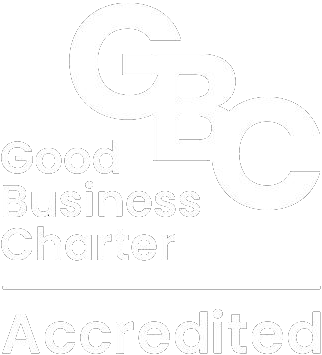Med-cycle®
Med-cycle®
For people + the planet
For people + the planet
We’re leading the way towards a happier headspace and a healthier environment. Knitmed ensures that everyone we work with is Certified Sustainable, which means that our suppliers undergo rigorous scrutinisation to ensure that they meet our standards. This is our promise to you to make sure we can craft a better space for everyone.
We only use sustainable and biodegradable materials to create our kits, our suppliers are vetted to the highest standards, and anyone we work with is paid a fair living wage.
FUTURE-FRIENDLY
Sustainable yarn, eco-patterns, and
community creativity.
MED-RECYCLE®
Knitting and Crafting Therapeutic
stitches for well-being and resilience.

FOR MENTAL-HEALTH
Therapeutic craft promoting mindfulness,
reducing stress & well-being.

SUPPORTING THE NHS
Join our crafting community for support
and inspiration and well-being.


FUTURE-FRIENDLY
Sustainable yarn, eco-patterns,
and community creativity.

MED-CYCLE®
Knitting and Crafting Therapeutic
stitches for well-being and resilience.

FOR MENTAL HEALTH
Therapeutic craft promoting mindfulness,
reducing stress & well-being.

SUPPORTING THE NHS
Join our crafting community for
support and inspiration & well-being.
The 7 R’s of sustainability
The 7 R’s of sustainability

1. Rethink
Before you buy something, think if you really need it. So many of us are guilty of making impulse purchases that we end up throwing out without using them. This is especially common with groceries.
Reducing food wastage is one of the best ways for us to slow down climate change. So next time be mindful about grabbing veggies if you don’t have plans to eat them. This doesn’t go just for groceries. How many clothes, makeup products, party decorations and other stuff get purchased only to be used once or twice then thrown out.
Next time you’re going to make a purchase, here are some questions you can ask yourself before you buy the item:
- What is its purpose?
- How many times will I use it?
- Can I recycle it or will it end up in the landfill?
- Do I have something at home that I can repurpose into the item I am looking to purchase?
- Can I repurpose it?


2. Refuse
These days, we are bombarded with free stuff. Extra napkins at fast food restaurants, business cards, pens and so much more. More often than not, we take these items home then throw them straight into our trash bins.
Avoid creating that extra waste but not accepting these free items. If you are confident that you will use it, then accept it. Otherwise, politely decline and move on.
I know it can seem awkward sometimes to say no to free stuff but remember why you’re saying no. You don’t want to bring clutter into your house and you definitely want to keep it out of our landfills.

3. Reduce
Everyone has heard of the third R of sustainability but do you know how to properly use it? This means reduce the amount of unnecessary stuff you buy and bring into the home.
One great way to do this is to invest in sustainable alternatives that will last forever.
Investing in reusable alternatives will drastically reduce the waste in your home. Plus, it will save you hundreds of dollars in the long run.
Check out 10 eco-friendly kitchen swaps and 10 eco-friendly bathroom swaps you can make to stop bringing waste into your home. Reducing can also mean to reduce the amount of a product you use to make it last longer. For example, you don’t need a whole pump of your shampoo. Companies purposely make too much product come out in one pump. This way you finish the bottle faster and you have to buy from the company sooner.
Some examples of ways you can reduce are:
• Use half a pump of shampoo/conditioner/face wash/moisturiser etc. next time
• Use less dish soap when washing dishes
• Reduce how often you put your clothes in the wash. If you only wore the t-shirt once and there’s no stains, you don’t need to wash it yet.


4. Repurpose
Repurposing is one of the best rs of sustainability. Once something has been used up, instead of throwing it straight into the trash, see if you can repurpose it and use it for something else. This will prevent perfectly good items from going into the landfill.
Some ways to repurpose items are:
• Use old moisturizer jars to hold safety pins, coins or other small items
• Glass jars are perfect for holding food or planting new seeds
• Use old newspapers for arts and crafts
• Use old toothbrushes to clean tight spaces
5. Reuse
Extend an item’s life by reusing the item until it can no longer function. This is different from repurpose because you are using the item for its original purpose. Whereas when you repurpose, you are using the item for a new purpose.
Some ways you can reuse items are:
• Clean disposable straws and reuse them
• Clean plastic cutlery and take it in your lunch box
• Reuse plastic bags to carry items (but ultimately, try to stop bringing them into your home)


6. Repair
Another way to extend the lifetime of items is to repair it if it breaks. There’s so many businesses that will repair items if you don’t know how to repair them. Plus, it will oftentimes be much cheaper to repair it than to buy a new one.
Some things that you can repair are:
• Go to a shoe repairman to fix scratches and broken heels or straps
• Have a seamstress fix a loose button or sew up a ripped seam
• Use your warranty to get your technology repaired by the manufacturer (phones,
computers etc.)
• Furniture repair stores can repair broken furniture
• Call a handyman to take a look at household appliances that aren’t working properly
7. Recycle
When it comes to recycling, google what types of materials you can recycled in your region. Not all regions have recycling facilities that can accept all types of plastic.
You can tell what type of plastic something is by the number inside the recycling sign. This is usually at the bottom or back of the container.
One important thing to note: your recycling should not smell bad!
Recycling facilities cannot accept items if they have food inside them. This goes for all takeout containers and glass food containers (salsa jars in particular). You have to wash the container thoroughly before putting it in the recycling bin.
If there is still food on it, the recycling facility will not only throw it out but they will have to throw out the whole batch of recyclable items.
Shockingly, only about 10% of all items recycled are actually accepted. That’s because so many of the items aren’t washed and that contaminates the whole batch. Let’s be proactive and wash our recyclables.
If it can’t be cleaned thoroughly, it needs to go in the trash.

Apply the 7 R’s of sustainability in your life
Apply the 7 R’s of sustainability in your life
We hope you learned some great ways to use these 7 R’s of sustainability in your daily life. Use them every day and know that every action you take towards a more sustainable life is helping our planet.
For people + the planet
For people + the planet

FUTURE-FRIENDLY
Sustainable yarn, eco-patterns,
and creativity.

MED-CYCLE®
Knitting & Crafting Therapeutic
stitches for well-being.

SUPPORTING THE NHS
Join our crafting community
for support and inspiration.
Stay in the loop and sign up for our emails
Stay in the loop and sign up for our emails
Sign up to get our emails where you’ll get updates on the therapeutic art of knitting! Discover how the rhythmic motion of needles and the creative focus of crafting beautiful textiles can be a balm for your mental well-being. Our newsletters share inspiring stories, helpful tips, and exclusive patterns to nurture your mind through the soothing embrace of knitting. Join our community and knit your way to inner calm and relaxation.
Join The Community
#knitmed@home
#knitmed@home




 Free delivery over £99
Free delivery over £99


